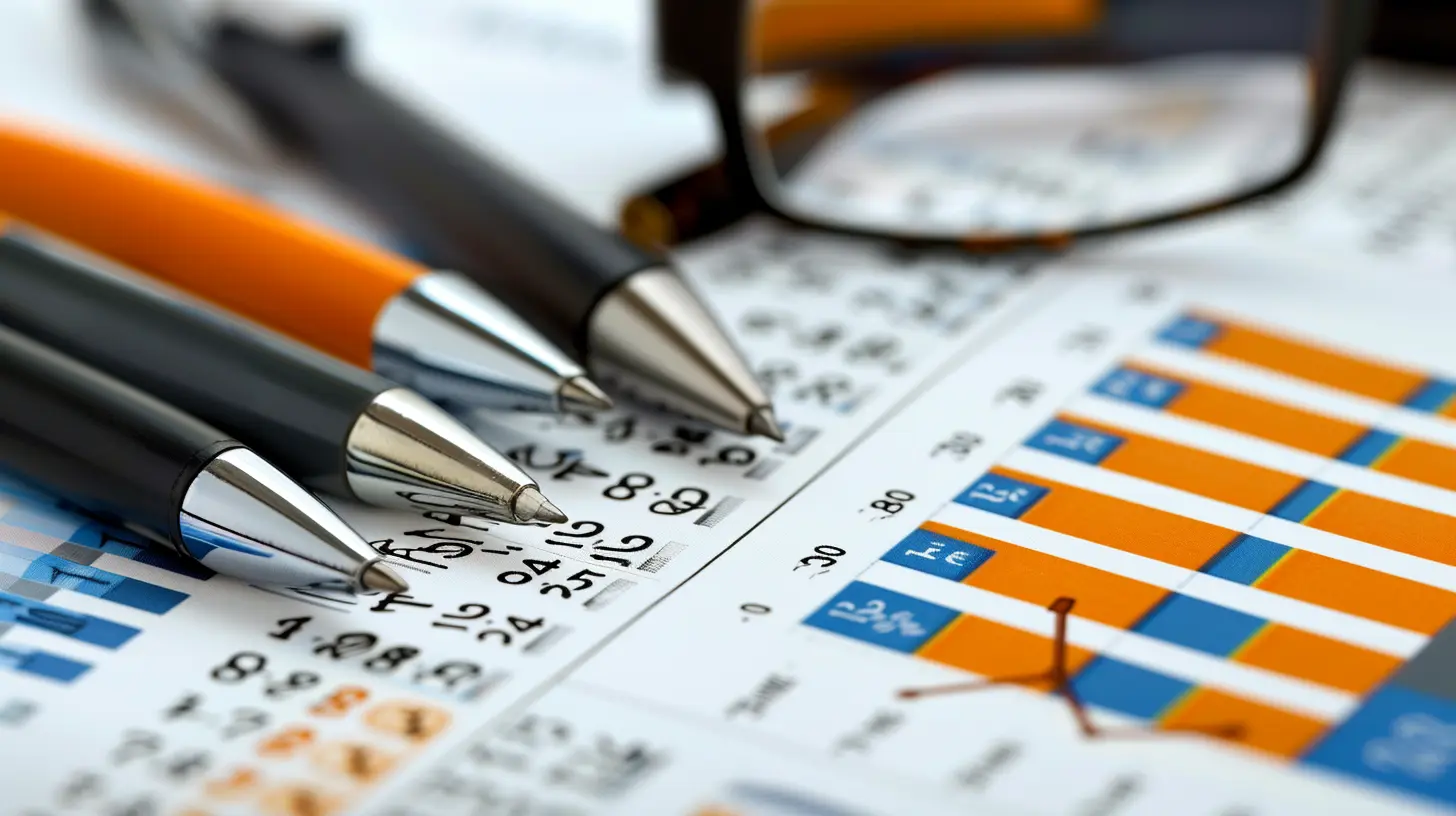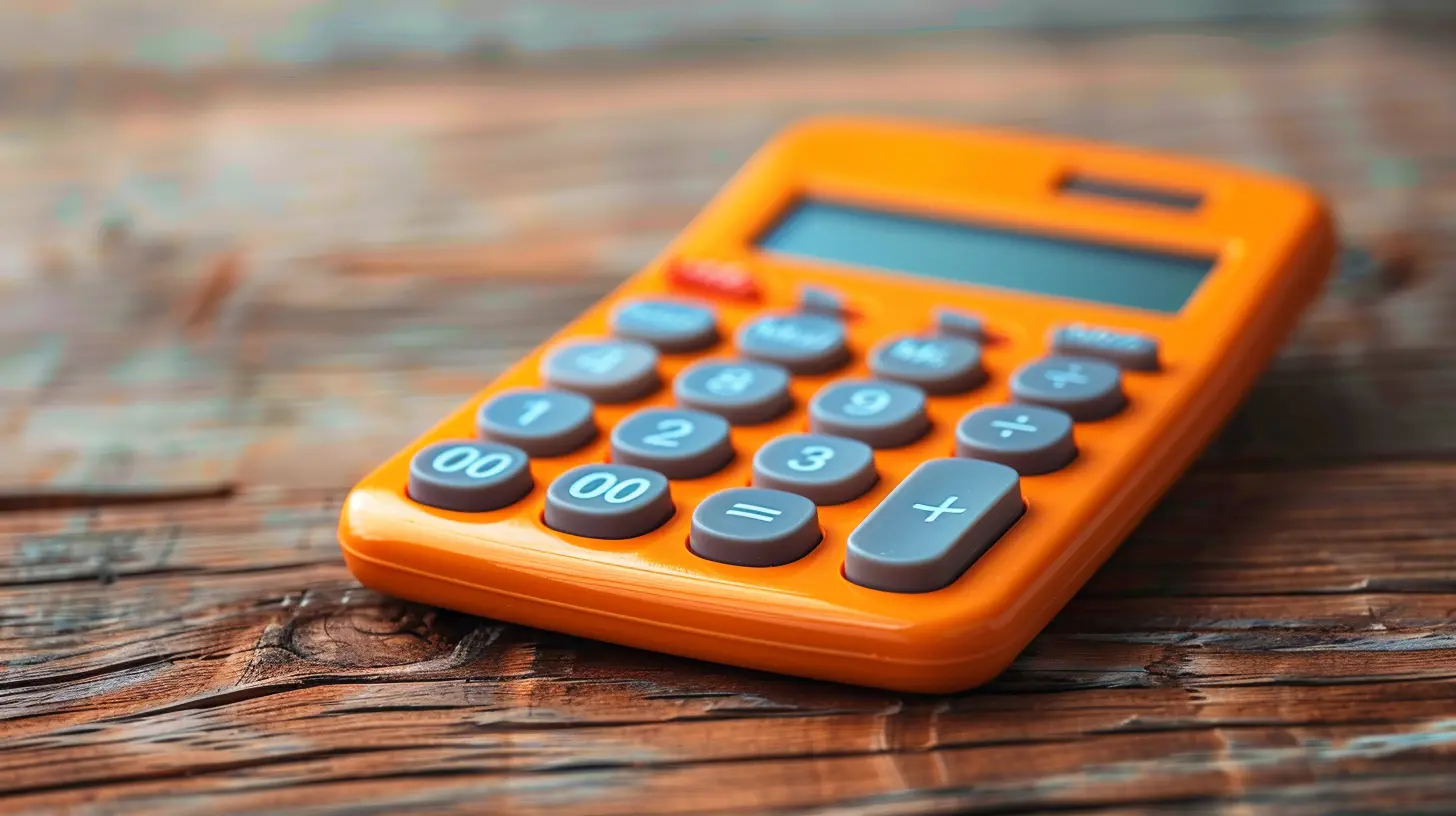Understanding Depreciation and Its Tax Advantages for Business Owners
9 October 2025
Let’s be honest—talking about depreciation doesn’t exactly make for a thrilling dinner conversation. But if you’re a business owner, understanding this simple accounting concept can be a game-changer. We’re diving deep into the world of depreciation, and trust me, it's worth sticking around for. Because what if I told you that depreciation can help you save a ton on taxes? Yep, that’s right. You’re about to learn how this accounting tool can become one of your secret weapons.

What Is Depreciation, Really?
Let’s start from the ground up. Depreciation is essentially the gradual reduction in value of an asset over time. Think of it like the wear and tear your favorite jeans go through—over time, they fade, maybe rip a little, and lose their original value. The same thing happens with business equipment, machinery, vehicles, buildings—you name it.In accounting terms, depreciation allows you to spread out the cost of a big-ticket item over its useful life. You buy a machine for $10,000? You don’t have to write off that entire expense in one year. Instead, you chip away at it across several years. This helps you balance your books in a more realistic way—and cut your tax bill while you’re at it.

Why Depreciation Matters for Business Owners
So, why should you care? Here’s the deal: Depreciation isn’t just about tracking how old your office chairs are. It’s about reducing your taxable income and, in turn, your tax liability. If your income is lower on paper because of depreciation, you owe less to Uncle Sam. That’s a win.For small and medium businesses trying to manage cash flow, minimize tax burdens, and boost profitability, understanding depreciation isn’t optional—it’s essential.

Depreciable Assets: What Can You Depreciate?
Not everything a business owns can be depreciated. The IRS sets the rules, and you’ll want to be on their good side. Here’s a quick cheat sheet:- Tangible property: Think machinery, vehicles, equipment, buildings.
- Must last more than a year: If it’s used up in under 12 months, it’s probably an expense, not a depreciable asset.
- Used in your business: Personal items don’t count, even if you sneak them into your office.
Notable exceptions? Land can’t be depreciated. It doesn’t wear out or get old. Same goes for inventory.

Different Types of Depreciation Methods
This is where it gets a bit math-y, but hang with me.1. Straight-Line Depreciation
The simplest method. You just divide the cost of the asset over its useful life. Easy, predictable, and consistent.Example: Buy a $10,000 computer system with a useful life of 5 years? That’s $2,000 each year in depreciation expense.
2. Declining Balance Depreciation
This method writes off more at the beginning and less in later years. It reflects how some assets lose value faster in their early life (like cars).Double Declining Balance (DDB) is the most aggressive version. You depreciate twice as fast as the straight-line method.
3. Units of Production
This one's perfect for manufacturing businesses where equipment use varies. Instead of time, it’s based on how much the asset is used.Example: If your machine made 5,000 units this year and 10,000 next year, your depreciation would reflect that difference.
4. Sum-of-the-Years’ Digits Method
A bit old-school but still used. This method accelerates depreciation like the declining balance method but uses a different formula that assigns more weight to early years.Section 179 Deduction: The Small Biz Jackpot
Here’s where it gets exciting. Section 179 of the IRS tax code allows small businesses to deduct the entire purchase price of qualifying equipment and software purchased or financed during the tax year.Let’s say you bought a $50,000 machine. With Section 179, you might be able to write off the entire cost this year. No waiting five years. Immediate tax savings.
There are some limits, of course. You can only deduct up to a certain amount each year ($1,160,000 in 2023), and the total amount of equipment you purchase can't exceed a set limit ($2.89 million in 2023). Also, the asset must be used at least 50% for business.
Bonus Depreciation: Even More Tax Relief
If Section 179 isn't enough, enter Bonus Depreciation. It lets you deduct a large portion (up to 100% for a limited time) of the cost of eligible assets in the first year. Unlike Section 179, there’s no dollar limit, and you can use it even if you’ve had a net loss for the year.As of 2023, bonus depreciation is set at 80%, but it’s being phased down over the next few years unless Congress steps in.
Stack Section 179 and bonus depreciation together, and you’ve got a powerful combo that can give your business serious breathing room.
Tax Advantages: Show Me the Savings
Okay, so let’s break it down with an example.You bought $100,000 worth of machinery this year.
- You use Section 179 to deduct $50,000.
- Then, apply Bonus Depreciation on the rest ($50,000), deducting another $40,000 (80% for 2023).
Boom—$90,000 in deductions right out of the gate. If your business is in a 24% tax bracket, that could mean $21,600 in actual tax savings. That’s real money staying in your business.
Depreciation and Financial Statements: What’s the Impact?
Depreciation isn’t just a tax thing—it also shows up on your financial statements.- Income Statement: Shows as an expense, reducing your profit.
- Balance Sheet: The asset value decreases over time via "accumulated depreciation."
- Cash Flow Statement: Since depreciation is a non-cash expense, it’s added back when calculating cash flow. It’s a bit of accounting magic.
So, while depreciation lowers your net income, it doesn’t hurt your cash. If anything, it helps it when you consider the tax savings.
Depreciation Schedules: Keep It Organized
Every asset has its own depreciation timeline, and you need to track them carefully. The IRS publishes something called the MACRS (Modified Accelerated Cost Recovery System), which is the standard depreciation method for most assets used in business.It sets different useful life categories:
- Office furniture: 7 years
- Computers and tech: 5 years
- Vehicles: 5 years
- Commercial buildings: 39 years
Sound daunting? It can be, but that’s why accounting software or a solid CPA is worth the investment.
Common Mistakes to Avoid
Before you start depreciating everything in sight, here are a few mistakes to sidestep:1. Incorrectly classifying assets – Don’t try to depreciate something that isn’t eligible.
2. Skipping depreciation altogether – If you don’t report it, you lose the tax benefit.
3. Choosing the wrong method – Picking straight-line when you could benefit more from accelerated depreciation might cost you extra taxes.
4. Forgetting partial-year rules – If you bought an asset halfway through the year, you usually can’t depreciate the full year’s amount.
What Happens When You Sell a Depreciated Asset?
Glad you asked. When you sell an asset you’ve depreciated, the IRS could come back for a piece of the pie through something called depreciation recapture. Basically, if you sell the asset for more than its depreciated value, the "gain" attributable to depreciation is taxed as ordinary income.Don’t let that scare you though—the tax savings you got along the way still outweigh the bite at the end.
Real-World Example: Depreciation in Action
Meet Sarah. She runs a small printing business. Last year, she bought a $30,000 industrial printer. Instead of depreciating it over 7 years using the standard straight-line method, she took full advantage of Section 179 and wrote off the entire expense in Year One.That $30,000 deduction lowered her taxable income significantly, saving her around $7,200 in taxes (assuming a 24% tax bracket). That’s money she reinvested into her business—hiring another employee and boosting her marketing.
When Should You Talk to a Pro?
If you’re just starting out or managing a simple side hustle, you might be able to handle depreciation with basic accounting software. But once you start buying major equipment, vehicles, or real estate—or if you’re looking at aggressive tax planning strategies—a CPA is worth every penny.A good accountant can help you:
- Maximize deductions
- Stay compliant with IRS rules
- Optimize cash flow through smart depreciation planning
Final Thoughts
Depreciation might seem like just an accounting formality, but for business owners, it’s a powerful tool that can dramatically reduce your tax burden and improve your bottom line. Whether you're buying new equipment or just trying to understand your financials, taking the time to get familiar with depreciation is worth it.And here’s the best part: You don’t need to be a tax wizard. With a little knowledge and the right help, you can make depreciation work for you—just like the successful entrepreneurs already out there crushing it.
all images in this post were generated using AI tools
Category:
Tax PlanningAuthor:

Yasmin McGee
Discussion
rate this article
1 comments
Simon Potter
This article beautifully clarifies the complexities of depreciation. Understanding its tax benefits is essential for business owners. Thank you for this invaluable insight!
October 24, 2025 at 3:41 AM

Yasmin McGee
Thank you for your kind words! I'm glad you found the article helpful in understanding depreciation and its tax benefits.


